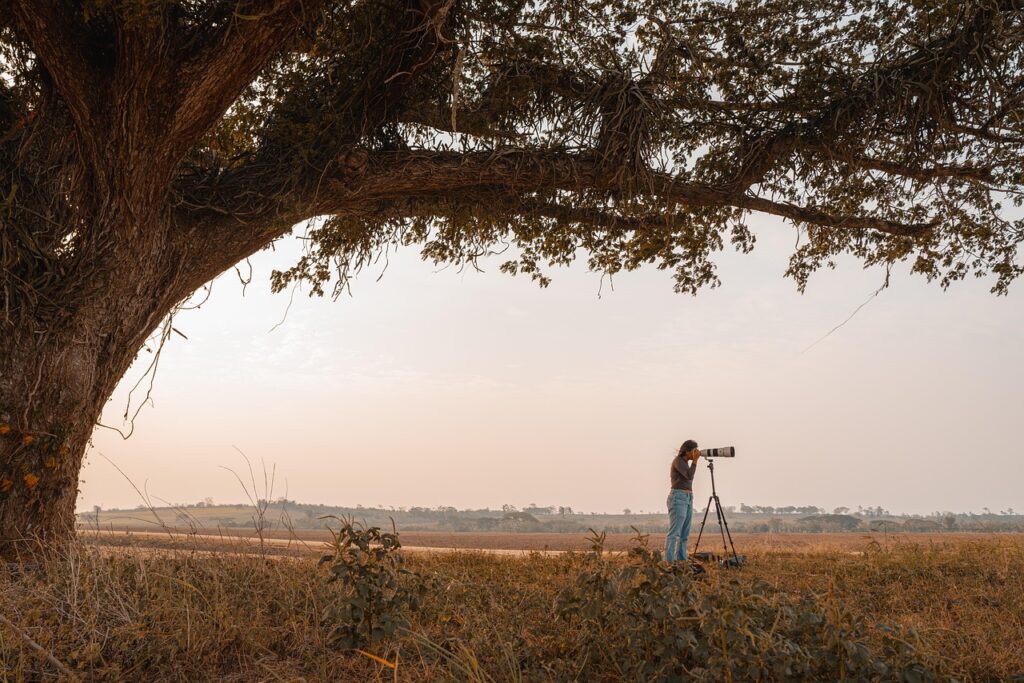Shooting from Distance

Safe Distance
Some of the best wildlife photos are taken from far away. Why? Because real wildlife moments happen when animals feel safe, unbothered, and free to be themselves. Getting too close can not only ruin the shot — it can harm the animal, change its behavior, or even put you at risk.
Luckily, with the right tools and mindset, you can capture intimate, powerful images from a respectful distance.
Why Distance Matters
— Close encounters often stress animals or disrupt natural behavior.
— Some species will abandon their young or territory if they feel threatened.
— Keeping your distance protects both you and the wildlife — some animals may charge if they feel cornered.
— Ethical photography prioritizes the moment, not the shot.
Tips for Long-Distance Shooting
— Use a telephoto lens. Something in the 200–600mm range gives you flexibility without needing to move.
— Stay low and still. Sudden movements draw attention. Blend into the environment as much as possible.
— Use natural cover. Trees, rocks, or tall grass can be helpful for hiding your presence.
— Shoot in bursts. Animals move quickly. A burst mode can help you capture just the right expression or movement.
— Rely on behavior patterns. Animals often repeat actions — be ready before it happens again.
Useful Gear
— Long zoom lens (200mm minimum)
— Monopod or bean bag for stability
— Lightweight tripod (especially for early morning or sunset shots)
— Remote shutter (to minimize movement)
Final Thoughts
The more invisible you are, the more magical your wildlife encounter will be. Distance is your friend — not your enemy. It allows animals to behave naturally, and that’s when the real magic happens.
Let the wild come to you. Wait. Watch. And when the moment happens, you’ll know you did it right.
Luckily, with the right tools and mindset, you can capture intimate, powerful images from a respectful distance.
Why Distance Matters
— Close encounters often stress animals or disrupt natural behavior.
— Some species will abandon their young or territory if they feel threatened.
— Keeping your distance protects both you and the wildlife — some animals may charge if they feel cornered.
— Ethical photography prioritizes the moment, not the shot.
Tips for Long-Distance Shooting
— Use a telephoto lens. Something in the 200–600mm range gives you flexibility without needing to move.
— Stay low and still. Sudden movements draw attention. Blend into the environment as much as possible.
— Use natural cover. Trees, rocks, or tall grass can be helpful for hiding your presence.
— Shoot in bursts. Animals move quickly. A burst mode can help you capture just the right expression or movement.
— Rely on behavior patterns. Animals often repeat actions — be ready before it happens again.
Useful Gear
— Long zoom lens (200mm minimum)
— Monopod or bean bag for stability
— Lightweight tripod (especially for early morning or sunset shots)
— Remote shutter (to minimize movement)
Final Thoughts
The more invisible you are, the more magical your wildlife encounter will be. Distance is your friend — not your enemy. It allows animals to behave naturally, and that’s when the real magic happens.
Let the wild come to you. Wait. Watch. And when the moment happens, you’ll know you did it right.
